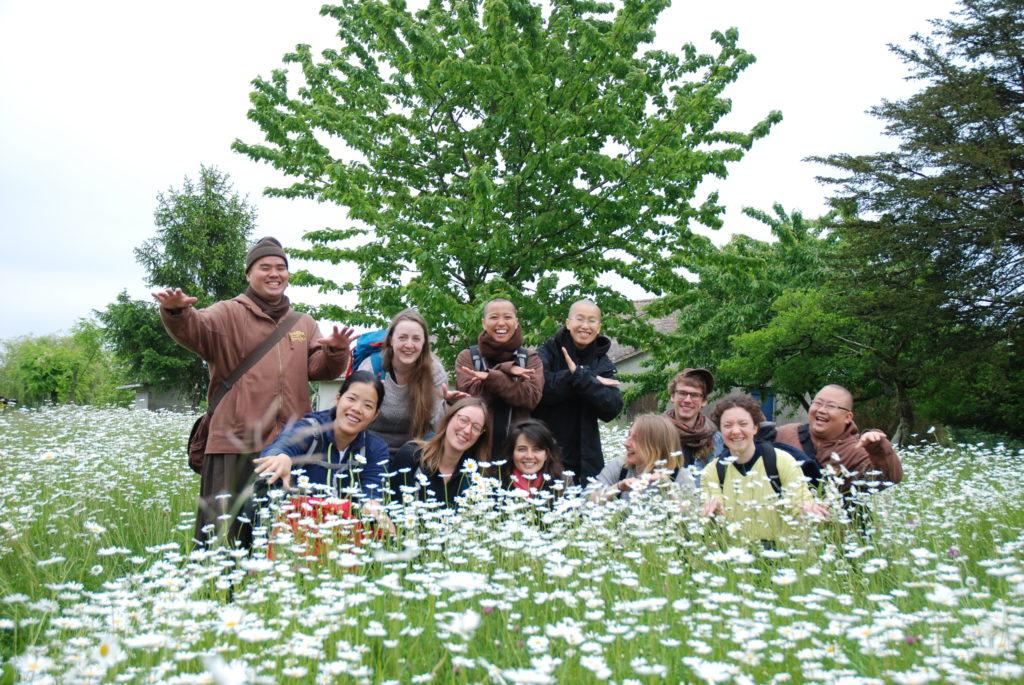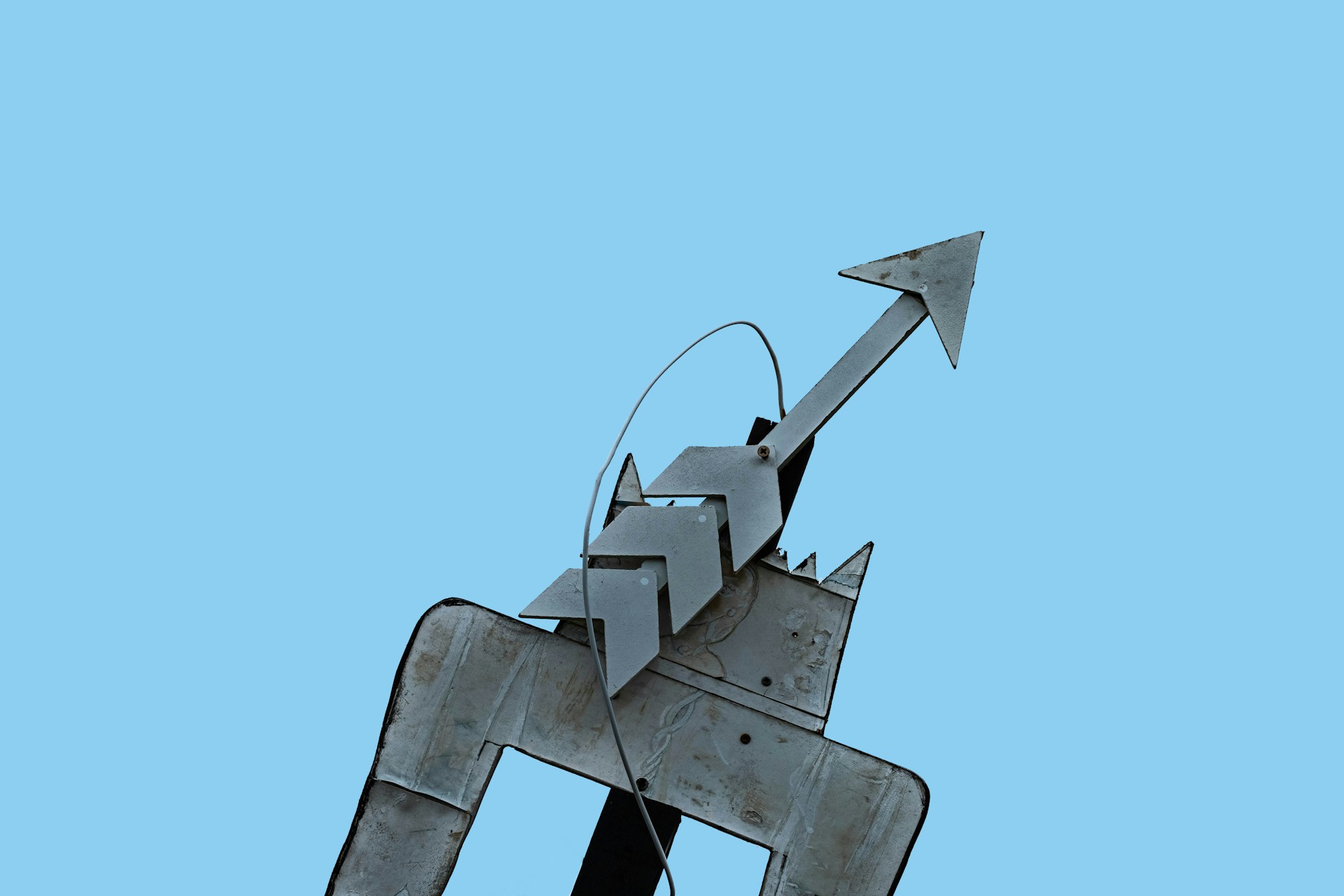Tai Chi Vs Yoga: Which Practice Is Best For You?
The post Tai Chi Vs Yoga: Which Practice Is Best For You? appeared first on The Yoga Nomads.
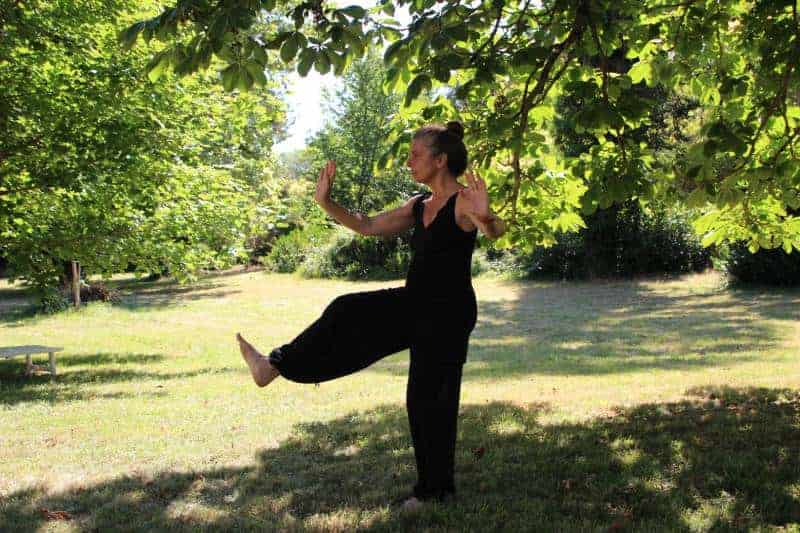
As mind-body practices, tai chi and yoga share many similarities; both can increase your awareness, reduce stress, and relax the nervous system. Even so, yoga and tai chi have very different origins, and the methods of each practice differ significantly too.
If you want to start a calming, gentle movement practice, tai chi and yoga are fabulous options. But how do you know which one is best for you? This article will discuss the main differences between yoga and Tai Chi and explain what each practice entails.
What is the difference between Tai Chi vs yoga?
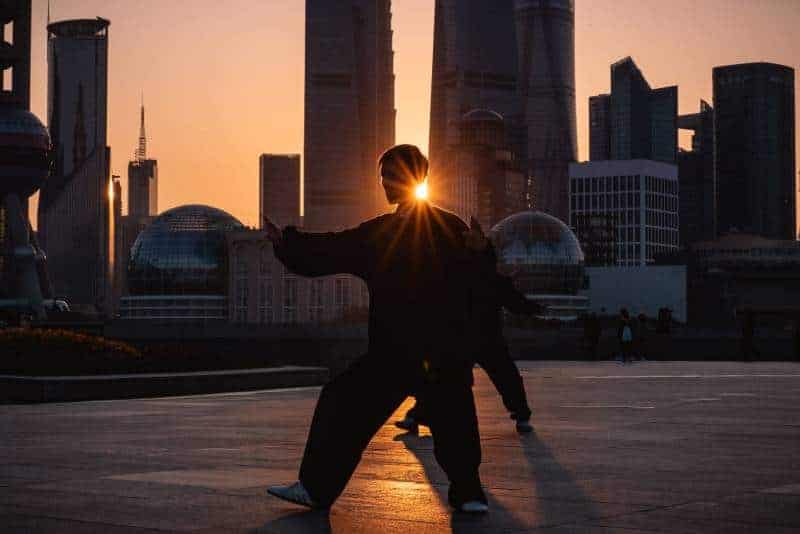
Yoga comes from India, Tai chi originated in China
Tai chi (traditionally called tai chi chuan) is a soft martial art from China. It uses a gentle, art-form style of movement rather than strikes, kicks, and hard blocks used in other martial arts.
The practice was influenced by Taoist and Buddhist monasteries. Traditionally, it was used for defense training and cultivating a mind-body connection. Tai Chi came to the western world in the 1900s, and today it is practiced more as a gentle form of exercise, lacking some of the martial arts aspect.
Yoga is a spiritual practice from India that dates back around 5000 years. It was first mentioned in the Hindu texts, The Vedas, recorded on stone tablets. According to Indian philosophy, monks practiced yoga as part of their spiritual path to enlightenment. Today, yoga is hugely popular worldwide thanks to its many mental, emotional and physical health benefits.
The have different styles of stretching
Another main difference between yoga and tai chi is the style of stretching. Both yoga and tai chi are great for improving flexibility, but yoga typically stretches muscles deeper. In yoga, you hold targeted stretches ranging from 5 to 20 breaths depending on the style. Then, as you maintain the pose, your body starts to open up and relax, enabling you to go deeper.
Tai chi focuses on flowing from one pose to the next without stopping to hold the stretches. The continuous movement promotes blood flow and, thus, is excellent for increasing overall mobility. However, yoga targets and stretches specific muscles allowing you to improve flexibility much more.
Yoga may be better for building muscular strength
Most tai chi movements are performed standing, which helps build lower body strength. However, several styles of yoga, including Ashtanga and Hatha yoga, help to increase strength in the entire body.
Aside from the powerful standing postures and balances that strengthen the leg muscles, yoga builds core strength with postures like boat pose (Navasana), headstand, and plank. There are also some challenging arm balances like crow pose (Bakasana) and forearm stand, which build muscle strength in the arms and shoulders.
Tai chi may be more accessible
Because tai chi has more gentle movements than some styles of yoga, pretty much anyone, regardless of age or fitness ability, can practice tai chi. However, the gentleness makes it particularly good for older adults. Research has shown that it can reduce osteoarthritis, back problems, and fibromyalgia pain. In addition, it has been shown to reduce falls in older adults and people with Parkinson’s disease.
You don’t need a mat or any props for Tai chi
All yoga poses are performed barefoot on a yoga mat, including the standing asanas. Moreover, props such as blocks, bolsters, or straps are standard in many yoga styles. However, Tai chi requires no mat or props and is performed wearing shoes. Moreover, it can be practiced on any surface, indoors or outdoors; it’s common to see groups of people learning tai chi in the park.
How are yoga and Tai Chi similar?

They are both ancient practices
Although they originate from different parts of Asia, yoga and tai chi have been around for a long time. The first written reference to tai chi was found over 3000 years ago in the I Ching (more commonly known as the Book of Changes), written between 1000–750 BC. Yoga is believed to be even older, estimated at around 5000 years old. Its first reference was found in The Vedas, written in segments between 1500–700 BCE.
They both emphasize breath control
In both tai chi and yoga, you connect the physical practice to your breath by inhaling in one movement and exhaling in the next. Both methods use deep abdominal breathing techniques where you breathe in and out through the nose rather than exhaling through the mouth, which is common in many fitness activities and sports.
They are both moving meditations
Both practices can be described as moving meditations because of their fluid, dance-like moves that are practiced in a mindful, careful way. In tai chi practice, every movement is deliberate and coordinated with the breath to unite the body and mind and bring the practitioner into a flow-like state. The same goes for yoga, particularly the dynamic styles.
They both improve the flow of life force
The flowing movements and breath connection in tai chi and yoga help to cultivate vital energy, known as the “life force,” and move it around the body. In tai chi, this is known as qi (chi), whereas in yoga, it is called prana. That being said, yin yoga has Chinese and Indian origins and works with qi energy rather than prana.
While both qi and prana refer to the life force within us, there is a subtle difference between the two. Qi is believed to be internal energy that flows through each organ and system of the body. In contrast, prana is a power developed through deep breathing.
By strengthening qi energy and breaking up blockages, you’ll feel many emotional and mental health benefits, from stress reduction to lowered anxiety. Cultivating more prana also helps us to remove emotional blockages and promote health, longevity, intelligence, and wisdom.
They both balance yin and yang energies
Another similarity between the two practices is the principle of yin and yang. In Chinese philosophy, Yin and Yang are two opposing and equally important elements that together make up the entire universe.
In Indian culture, yin and yang are represented as the contrasting Hindu gods, Shiva and Shakti. Shiva is the masculine, active energy, and Shakti is the feminine. Like in ancient China beliefs, it is said that the union of Shiva and Shakti results in the totality of the whole creation.
The three main components of tai chi, movement, meditation, and deep breathing, help to balance the yin and yang energy. In yoga, practicing each posture on both sides of the body cultivates this balance, as the right side of the body is yang and the left side is yin.
Which is easier, Tai Chi or yoga?
Tai chi uses fluid movements as each pose flows into the next. In Tai chi, you’re constantly moving, which makes it an excellent form of aerobic conditioning, improving stamina and endurance. However, it’s important to note that all the movements are very gentle, and it is not a vigorous practice. So despite the constant flowing movements, tai chi is unlikely to make you sweat or leave you feeling out of breath.
Yoga can be either gentle or demanding. This is because there are many styles, some are dynamic and challenging, and others are gentle and slow. For example, some of the most intense yoga styles are vinyasa, ashtanga, and power yoga. They incorporate many strength-building postures, working the legs, abs, and upper body.
In these styles, it is not uncommon to do multiple plank poses and Chaturanga Dandasanas (a low plank). Like tai chi, vinyasa and power yoga workouts consist of movements that flow from one to the other, but the difference is the intensity. The asanas may start gentle, but as the session progresses, the postures become more physically demanding.
Yin and restorative yoga are two slow and passive yoga styles. Unlike tai chi which is predominantly done standing, restorative and yin yoga consists of floor-based poses. You also hold the stretches for an extended time, usually 2 to 5 minutes per asana. Thus, there is no fluidity between the movements. Still, the stretches target deeper connective tissues rather than the superficial muscles, which can cause some physical tension for people with tightness in the body.
So, if you’re comparing tai chi with power, ashtanga, or vinyasa yoga, you could say that yoga is more challenging. However, if you are comparing tai chi with yin or restorative yoga, they could be on the same level. And, of course, everyone is different; a physically fit and flexible person may not find either practice strenuous.
Which is better for you, Tai Chi or yoga?
Both tai chi and yoga are scientifically proven to improve many physical and mental health conditions. Here are some of the most common benefits of tai chi and yoga. As you can see, the two practices have many similar uses.
Benefits of practicing Tai Chi
Increases calmness and awarenessReduces stress levelsImproves balanceImproves stamina and general fitness levelsImproves range of motion and general mobilityImproves cognitive functionMassages the internal organs and improves digestionBoosts immune systemPromotes longevity and can prevent certain health conditions like heart disease and arthritisBenefits of practicing yoga
Increases calmness and awarenessBuilds muscle strengthIncreases flexibilityImproves balanceRelaxes the nervous system and reduces stressCan relieve depression and anxiety symptomsCan aid in weight lossLowers high blood pressureCan help with ailments such as back painWhat to expect from a Tai Chi class
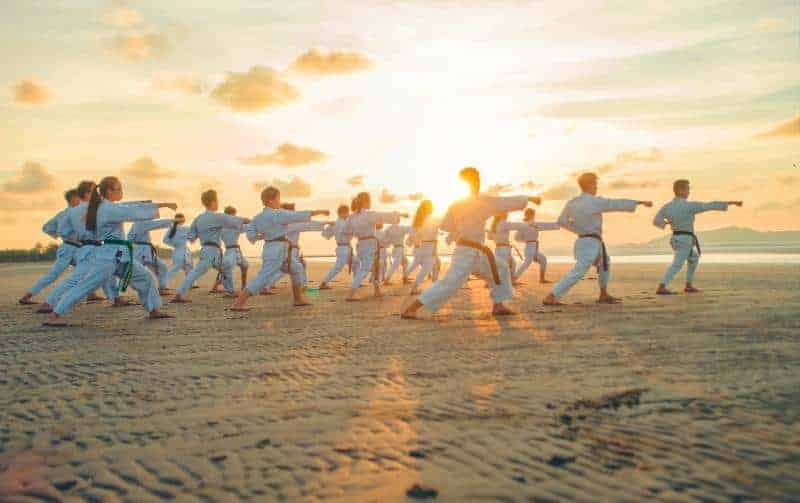
A tai chi class starts and ends in a standing position. First, the tai chi instructor may explain a bit about the practice if there are beginners present. Then you will move into the warm-up stretches, which may include shoulder circles, turning your head from side to side, or heel-to-toe rocking.
The beginning of the class will typically also include breathing exercises to cultivate focus and concentration ahead of the physical postures. Here you will learn the most popular tai chi movements and perform short combinations. If the class is aimed at beginners, you’ll learn the simplest forms and repeat them several times to get the hang of it.
Most tai chi instructors will include a brief period of stretching and breathing at the end of the class to cool down the muscles and allow the effects of the practice to settle.
What to expect from a yoga class
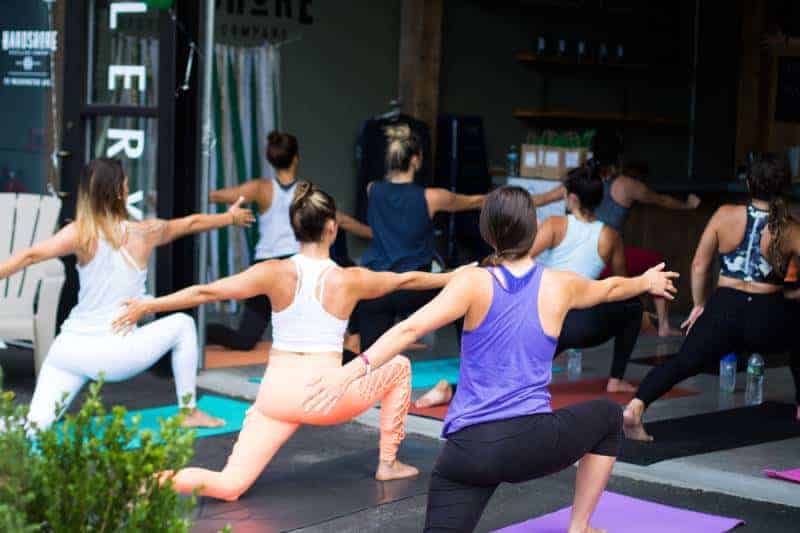
Depending on the style, yoga teachers typically start the class seated or lying down. The first few minutes are focused on centering; this could be observing the natural breath, practicing yogic breathing techniques, or noticing bodily sensations.
After this brief meditation, the warm-up stage begins and consists of gentle, basic movements and stretches. Next, in Hatha, Vinyasa, and Ashtanga yoga classes, a sequence known as the sun salutation is practiced multiple times. Sun salutations warm the whole body ahead of the standing postures and balances.
After these sections, you typically return to the mat for seated postures, including hip openers and backbends, before reclining asanas and the final relaxation pose. Shavasana is unique to yoga practice and involves laying down in a still and utterly relaxed position with eyes closed for a few minutes or more at the end of the class. The purpose is to allow the body to integrate everything you did throughout the practice.
Combining yoga and Tai Chi classes
Because of their similarities, combining tai chi and yoga into one class is possible. For example, a tai chi yoga hybrid class typically includes a combination of tai chi exercises and yoga asanas. Alternatively, it could incorporate tai chi style arm movements into some static standing yoga poses.
If you already regularly practice tai chi, a hybrid class could be an excellent introduction to yoga or vice versa. However, we recommend trying both practices separately to experience the full benefits of each.
Final thoughts on Tai Chi vs yoga
If you’re looking for a gentle exercise that will calm your mind and improve your overall health, either tai chi or yoga are ideal. But, of course, which one you choose is mainly personal preference, so we recommend giving both a go to experience the benefits for yourself.

 JimMin
JimMin 








